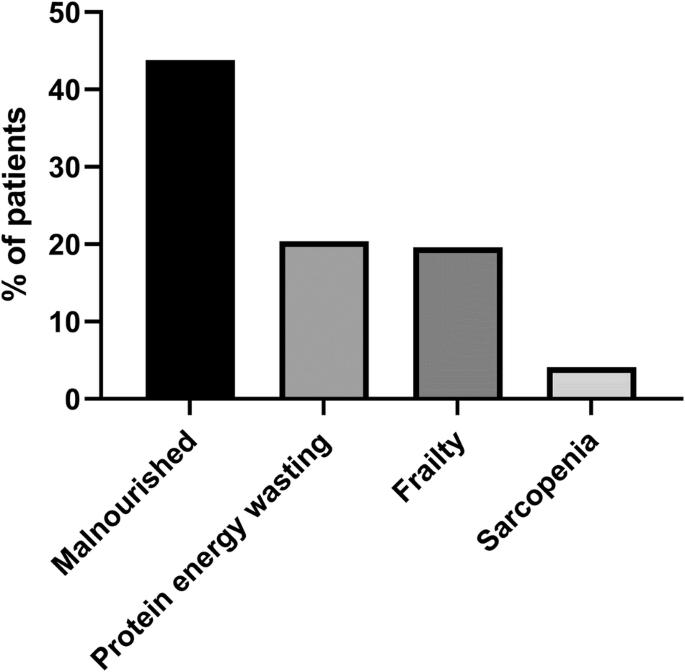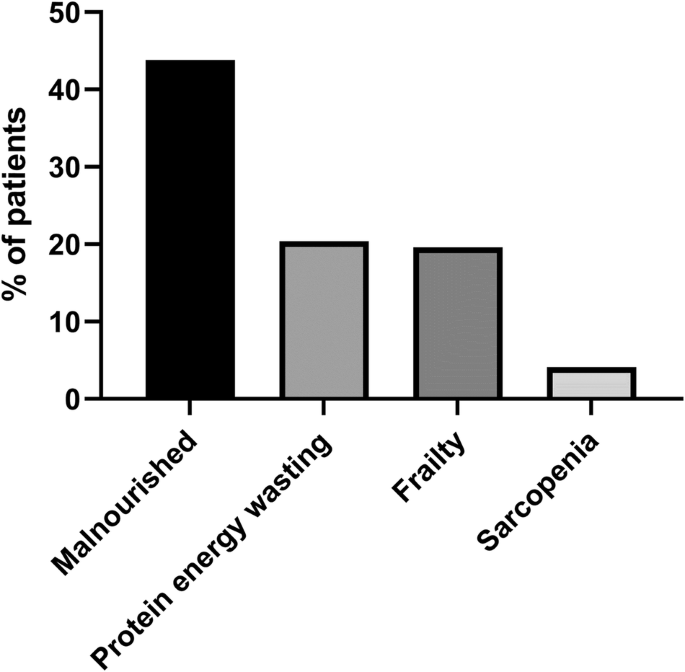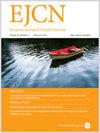撒哈拉以南非洲血液透析中心患者的营养不良、蛋白质能量消耗和肌肉疏松症。
IF 3.6
3区 医学
Q2 NUTRITION & DIETETICS
引用次数: 0
摘要
背景:据报道,血液透析(HD)患者营养不良的风险更大,发病率和死亡率也有可能增加。然而,大多数研究报告都来自经济发达的国家。因此,我们对撒哈拉以南非洲国家公立大学医院的血液透析患者的营养状况和饮食进行了评估:我们于 2022 年 5 月对在该国最大的透析中心就诊的 HD 患者进行了营养评估,收集了人口统计学和临床数据、饮食摄入量以及人体测量和生物阻抗身体成分测量结果。营养不良根据主观总体评估得分(SGA)进行分类。此外,还对蛋白质能量消耗(PEW)、临床虚弱和肌肉疏松症进行了评估:共招募了 97 名 HD 患者,平均年龄为(44.7 ± 12.2)岁,其中 55 名(56.7%)为男性。43.8%的患者存在营养不良,20.6%的患者存在PEW,17.6%的患者存在虚弱,4.1%的患者存在肌肉疏松症。在多变量逻辑回归中,血清白蛋白较高(调整后的几率比(AOR)为 0.89,95% 置信区间(CI)为 0.85-0.95,P 结论:尽管患者年龄较小、合并疾病较少,但他们的血清白蛋白却较高:尽管患者年龄较小、合并疾病较少,但在这种资源贫乏的环境中,营养不良仍很常见。主食以玉米为主,这是一种低蛋白食品。就业改善了经济状况,并有可能改善营养状况。还需要进一步研究,以确定额外的膳食蛋白质是否能降低该人群营养不良的发生率。本文章由计算机程序翻译,如有差异,请以英文原文为准。


Malnutrition, protein energy wasting and sarcopenia in patients attending a haemodialysis centre in sub-Saharan Africa
Haemodialysis (HD) patients are reported to be at greater risk of malnourishment, and at risk of increased morbidity and mortality. However, most studies report from economically advanced countries. We therefore assessed the nutritional status and diet among HD patients attending a public university hospital in a sub-Saharan African country. We performed nutritional assessments in HD patients attending the largest dialysis centre, in the country, collecting demographic and clinical data, dietary intake, along with anthropometric and bioimpedance body composition measurements in May 2022. Malnutrition was classified according to subjective global assessment score (SGA). Additional assessments of protein energy wasting (PEW), clinical frailty, and sarcopenia were made. All 97 HD patients were recruited, mean age 44.7 ± 12.2 years, with 55 (56.7%) males. Malnutrition was present in 43.8%, PEW 20.6%, frailty 17.6% and sarcopenia 4.1%. On multivariable logistic regression higher serum albumin (adjusted odds ratio (AOR) 0.89, 95% confidence intervals (CI) 0.85-0.95, p < 0.001), creatinine (AOR 0.99, 95%CI 0.98–0.99, p < 0.001), greater mid upper arm circumference (AOR 0.89, 95%CI 0.83–0.95, p = 0.001), body cell mass (BCM) (AOR 0.79, 95%CI 0.67–0.95, p = 0.013) and employment (AOR 0.45, 95%CI 0.23–0.87, p = 0.017), were are all protective against malnourishment. Almost 75% had reduced dietary protein intake. Despite a younger, less co-morbid patient population, malnutrition is common in this resource poor setting. The staple diet is based on maize, a low protein foodstuff. Employment improved finances and potentially allows better nutrition. Further studies are required to determine whether additional dietary protein can reduce the prevalence of malnutrition in this population.
求助全文
通过发布文献求助,成功后即可免费获取论文全文。
去求助
来源期刊
CiteScore
10.60
自引率
2.10%
发文量
189
审稿时长
3-6 weeks
期刊介绍:
The European Journal of Clinical Nutrition (EJCN) is an international, peer-reviewed journal covering all aspects of human and clinical nutrition. The journal welcomes original research, reviews, case reports and brief communications based on clinical, metabolic and epidemiological studies that describe methodologies, mechanisms, associations and benefits of nutritional interventions for clinical disease and health promotion.
Topics of interest include but are not limited to:
Nutrition and Health (including climate and ecological aspects)
Metabolism & Metabolomics
Genomics and personalized strategies in nutrition
Nutrition during the early life cycle
Health issues and nutrition in the elderly
Phenotyping in clinical nutrition
Nutrition in acute and chronic diseases
The double burden of ''malnutrition'': Under-nutrition and Obesity
Prevention of Non Communicable Diseases (NCD)

 求助内容:
求助内容: 应助结果提醒方式:
应助结果提醒方式:


